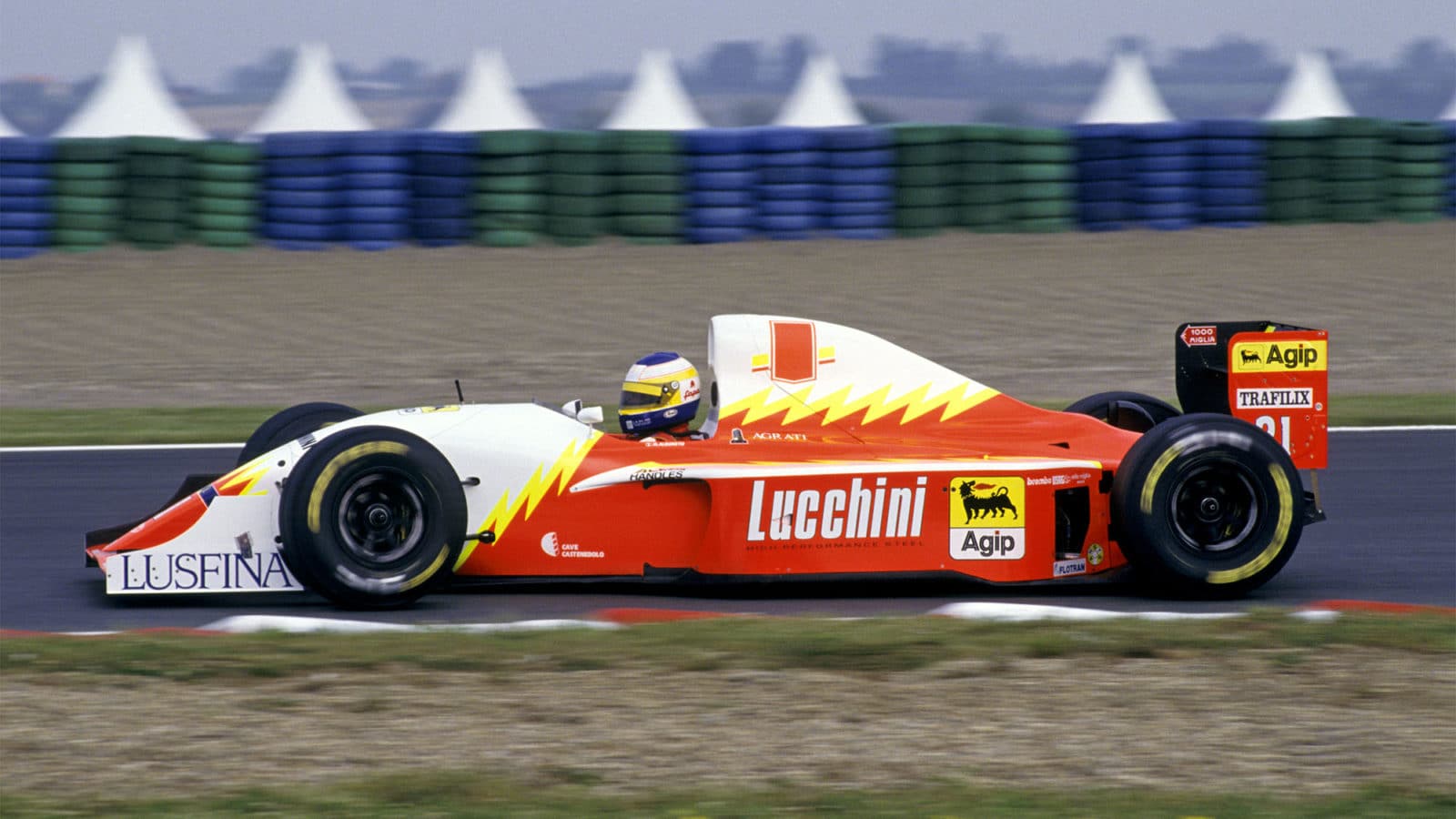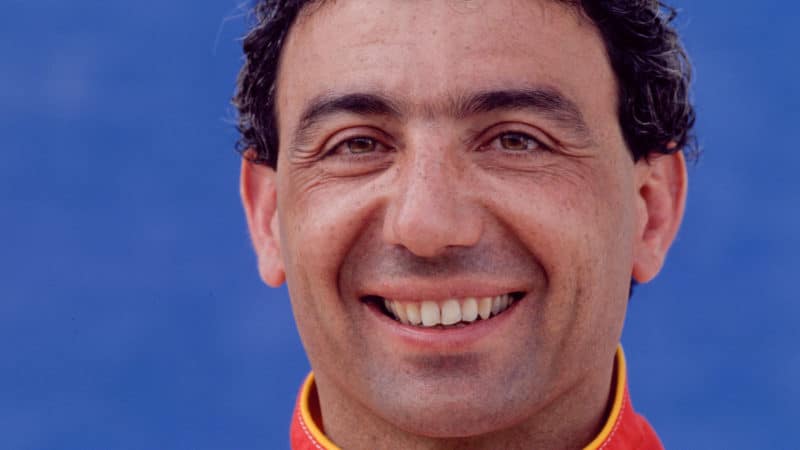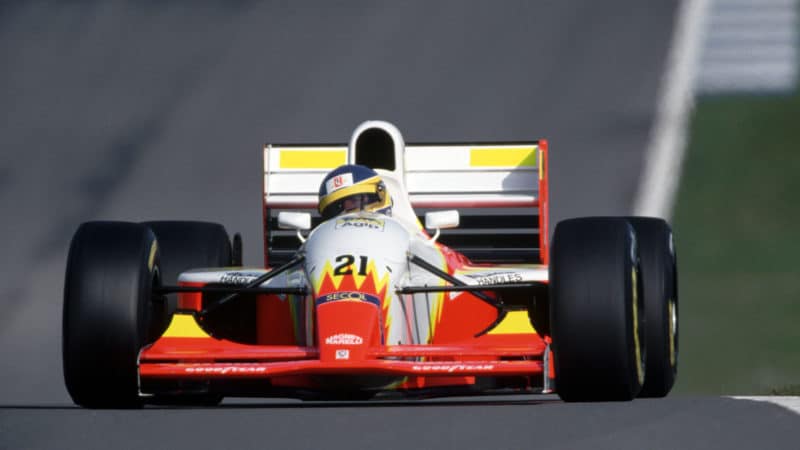The sky was the limit after he landed the team’s first big sponsor in Chesterfield, a Philip Morris brand last seen at Surtees way back in 1976. He gained prestige by hiring an ex-Ferrari works driver in Alboreto, backing him up with the promising new F3000 champion, Luca Badoer. And he decided to abandon longtime chassis supplier Dallara and embrace British technology by joining forces with Lola, left in the lurch after a split with Larrousse. Despite a lack of active suspension and other trendy gizmos, the ingredients all seemed to be in place.
In its outrageous new livery, the Lola-Ferrari T93/30 certainly looked the business. Then Alboreto gave it a shakedown run.
“When the car was stopped in the pitroad, it looked fantastic!” Michele recalls. “But the first time drove it I thought someone was playing a joke on me. I tried the car in Estoril, and after three or four laps I stopped and went into the garage. I said, ‘We have just got enough time to have a new car ready the middle of the season if we start today, because this one will never work!’ But unfortunately the budget was not good enough to think about a new car…” Alboreto knew the season was wasted before had even begun.
“In the beginning the intention was to have a good project, but in the end it was just an F3000 adapted to an F1 engine. That made me so unhappy the first time I saw the car. It was big, heavy, no downforce – absolutely no downforce at all. I think it was the only F1 car of the modem era which worked on gravity, not aerodynamics! It was terrible just having to try and qualify the thing.”

Badoer had more joy with the Lola than his team-mate, but Alboreto says the poor car “decided” his fellow Italian’s career
Pascal Rondeau/Getty Images
With the entry list slimmed to 26, the maximum number of starters, that didn’t seem to be a problem, and Alboreto and Badoer had the back row to themselves at the Kyalami opener. Unfortunately for the team, the FIA brought in a new rule to keep standards up – the field would be restricted to 25, so there would always be one non-starter.
After scraping in and actually finishing in Brazil (second last ahead of Badoer) and Donington (last, six laps down), Michele failed to make the cut at Imola, Barcelona, Montreal, Magny-Cours and Silverstone. In between he somehow hauled the thing into the field in Monaco, only for the gearbox to break. Rising star Badoer missed out only at Donington and Monaco; perhaps because he didn’t know any better, he usually seemed to find more in the car than his disillusioned 37-year-old team-mate.



